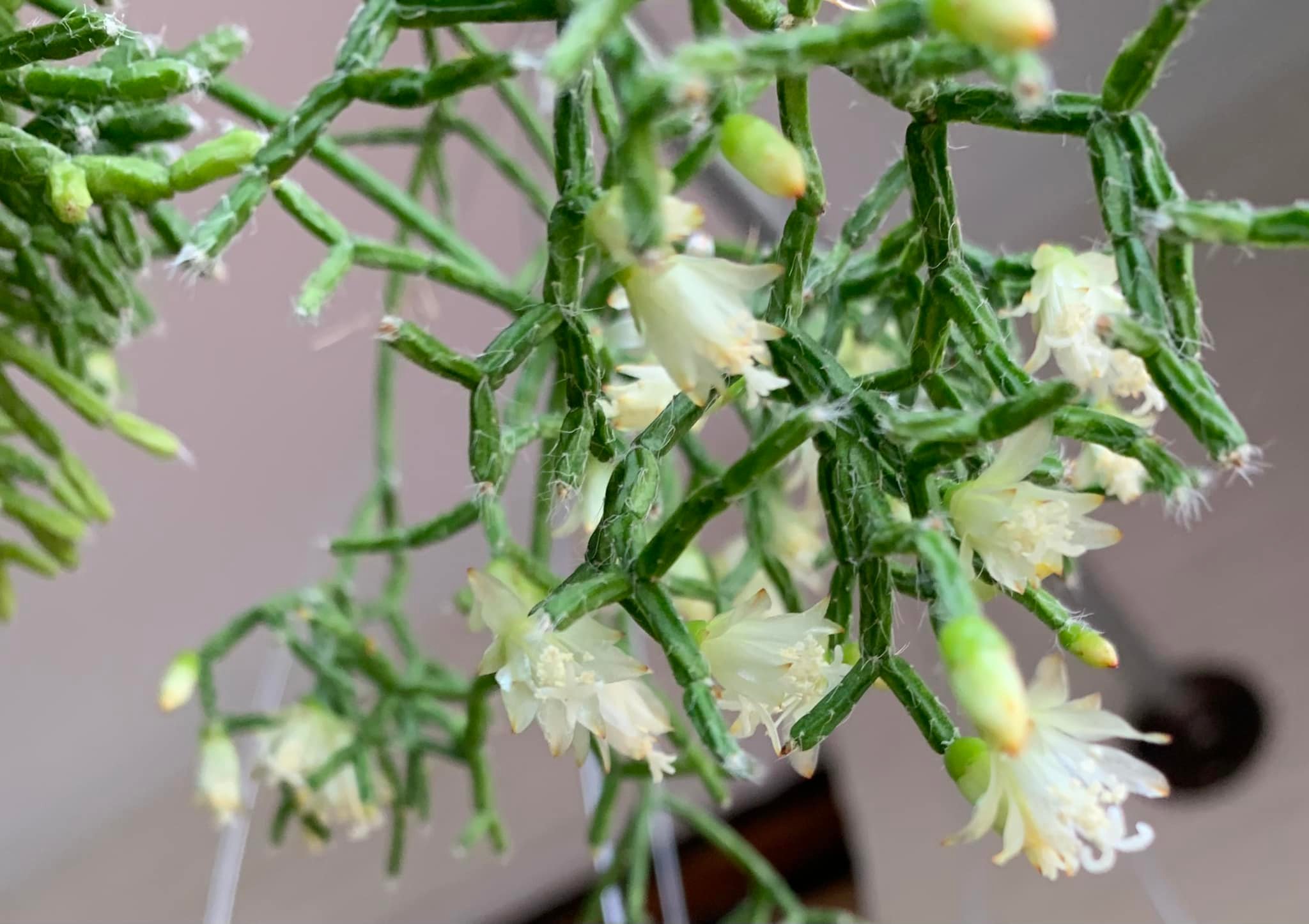Rhipsalis, which is also called mistletoe or coral cactus, is a tropical cactus that grows on rocks or on trees. It doesn’t have spines and has long, thin stems that drape and fall. Rhipsalis grows best indoors in indirect, filtered light conditions with acidic soil. It likes moist soil but not soggy wet and warmer temperatures that never dip below 50 degrees Fahrenheit.
The Rhipsalis cactus species grows slowly, which is good because some specimens can get up to 20 feet long after many years.
Caring for an Rhipsalis Cereuscula A Beginner’s Guide
The rhipsalis cereuscula, also known as the coral cactus, rice cactus, or mistletoe cactus, is a charming indoor succulent that can add a pop of green to any space With its cascading stems covered in knobby projections, it resembles a underwater coral reef, making it a uniquely beautiful houseplant. While relatively easy to care for, the rhipsalis cereuscula does have some specific needs. By understanding what this plant requires and how to meet those needs, even novice gardeners can keep a coral cactus thriving for years.
Light
As a tropical jungle plant, the coral cactus prefers bright but indirect light, avoiding harsh direct sunlight. East or west facing windows work well, providing gentle morning or evening sun. Bright shade also suits it. Too little light leads to leggy, weak growth, so monitor your plant for signs it needs more illumination. Pale stems and sparse flowering indicate insufficient brightness. Move it to a sunnier spot or supplement with a grow light if needed.
Water
Watering properly helps prevent diseases. The rhipsalis cereuscula likes more moisture than desert cacti but still requires well-draining soil that completely dries out between waterings. Only water when the top inch of soil is dry. Water thoroughly until it runs from the drainage holes, then dump out any excess from the saucer. Allow it to drain well and dry out before watering again. Mist occasionally to increase humidity. Reduce water in winter when growth slows. Yellowing stems suggest overwatering.
Soil
A loose, porous potting mix provides the quick drainage these jungle cacti require. A cactus potting soil amended with extra perlite, coarse sand, pumice, or orchid bark works well. Some gardeners use equal parts potting mix and perlite or orchid bark. Good airflow around the roots is also key. Plant in terra cotta pots with drainage holes and avoid soil compaction.
Temperature
Rhipsalis cereuscula thrives in warm conditions between 60-80°F. Temperatures below 50°F can damage it. Because it evolved in the humid tropics, average room humidity suits it well. Providing extra humidity with a pebble tray or humidifier can be beneficial but isn’t critical.
Fertilizer
Feed monthly during spring and summer with a balanced houseplant fertilizer diluted to half strength. Cease fertilizing in fall and winter when growth naturally slows. Over-fertilizing can cause leggy growth and damage the coral cactus.
Pruning
Trim off any dead or damaged stems to keep your plant looking its best. Pruning also shapes the rhipsalis and prevents legginess. Cut back long, wayward branches using sterile pruners. Pinching off stem tips prompts bushier growth. Prune right after flowering concludes.
Propagating
Take four to six inch cuttings from the tips of healthy stems in spring or summer. Allow the cut ends to callous over for several days, then plant in moist potting mix. Enclose plastic to increase humidity until new growth emerges. Detach offsets that form on older plants and root them in similar fashion.
Common Problems
Overwatering is the most common mistake, causing root rot. Allow the soil to dry between waterings and provide well-draining soil. Mealy bugs, scale, and spider mites may infest the plant, appearing as small insects, bumps on the stem, or webbing. Control with neem oil or insecticidal soap sprays. Lack of flowering can indicate insufficient light or nutrients. Move to a brighter location and fertilize regularly.
Displaying
The rhipsalis cereuscula’s cascading stems make it perfect for hanging baskets or high shelves where its tendrils can dangle freely. Its exotic look also makes it ideal for terrariums and fairy gardens. Plant in a wider, shallower pot to create a bushier, upright plant for table tops.
The coral cactus provides a unique texture and tropical flair to indoor décor. By understanding this plant’s preferences for bright, humid conditions and providing well-drained soil, the right temperatures, and moisture when dry, gardeners can enjoy the rhipsalis cereuscula’s coral-like beauty for years to come. With a bit of specialized care, this unusual succulent makes a charming addition to any indoor garden.

Soil
A typical cactus potting mix should be fine for a Rhipsalis cactus, ideally containing some organic material. They can also do well with a standard potting mix blended with even parts of sand. As epiphytes, Rhispalis cacti don’t need a lot of soil where they come from. Their shallow roots are enough to hold the plant in place.
Water
Keep these plants moist, but do not allow them to sit in standing water. Falling leaves can signify that the plant is overwatered.
Rhipsalis cereuscula Care Tips
FAQ
Does Rhipsalis like sun or shade?
How to get Rhipsalis to bloom?
How do you care for a Rhipsalis indoor plant?
Do Rhipsalis like to be misted?
